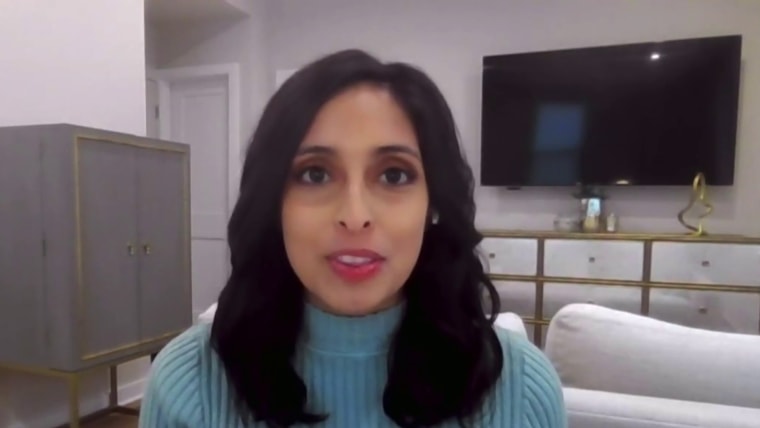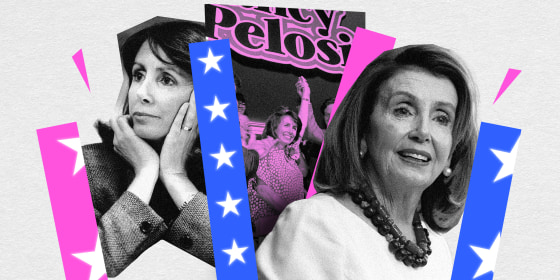House Speaker Nancy Pelosi, D-Calif., posted a video Tuesday to announce her re-election bid. She’s going to win the race for her San Francisco seat for the 18th time; that’s not in doubt. The question that every House Democrat is asking, though, is “what comes next?” I don’t know what Pelosi intends — but when she returns to Washington next January, it can’t be with an eye on retaining the speaker’s gavel.
This isn’t a dig at her leadership style. Since she became the leader of the House Democrats in 2002, Pelosi has been a master strategist and negotiator. She’s managed to keep her caucus together through the Obama and Trump administrations, shepherding landmark legislation into law along the way. Even after she lost the speakership in 2011, she remained the minority leader until she reclaimed the gavel in 2019.
That’s remarkable stability, especially when you compare her tenure to the fractious chaos on the other side of the aisle. The Republican caucus has burned through its leaders by comparison, with four men holding the position of speaker or minority leader since Pelosi took the reins. Even as she’s had to bring the more moderate and progressive wings of her party together, she’s done so with aplomb. There’s been no serious challenge to her reign, as she’s kept her rivals close at hand.

That tendency has ironically become part of the reason her time atop the caucus needs to end. Pelosi, 81, has been in Congress since the year I was born — and she isn’t an outlier on the age front among her top leadership team, which has remained with her since 2007. Steny Hoyer of Maryland — the majority leader and Pelosi’s longtime frenemy — is 82. Jim Clyburn of South Carolina is the majority whip, the No. 3 spot in the House, and 81 years old, as well.
Neither has indicated whether they will also want to retain their positions should Pelosi step down as speaker. But Hoyer bristled at the pledge Pelosi made in 2018 to step down as leader after four years, reportedly snapping: “She’s not negotiating for me.” Clyburn, who is also running again, dismissed the idea that he needed to step aside for younger Democrats. “I never asked anybody to die for me," he said in an interview for “Axios on HBO.” "I don't know why people come saying you need to step aside for me. No. If you want my seat, come get it."

Either could make his own play for the top gig if Pelosi doesn’t. Clyburn was noncommittal in 2020 when asked whether he’d be interested in the speaker’s role. But it seems doubtful that the caucus will select another octogenarian to replace Pelosi.
In any case, Pelosi’s team has been parked in the leadership suites for long enough. Its stretch of time at the helm has caused a bottleneck, leaving younger Democrats antsy for change. What exactly that change looks like is still up in the air, The Washington Post reported this month:
Some want a strong hand like Pelosi.
“I want to make sure that it is someone who can pull the party together. As Pelosi says: ‘Our diversity is our strength, and unity is our power.’ I want to make sure it’s someone who can hold that unity,” said Rep. Bradley Schneider (Ill.), a moderate.
Others want power decentralized, with members hashing out their disagreements among themselves rather than being told where to stand.
“I think there was a ‘holding of power’ model that worked very well for a long time, and I think now it is more about a recognition of different centers of focus within the Democratic caucus that have to be brought in and brought together,” said Rep. Pramila Jayapal (Wash.), who chairs the Congressional Progressive Caucus. “It takes some acceptance of more-decentralized leadership.”
For now, the top contender to replace Pelosi is Hakeem Jeffries of New York, the chair of the House Democratic Caucus. He’d be the first Black lawmaker to serve as the head of his party in the House, and should the Democrats manage to hold control after this year’s midterms, the first Black speaker of the House. It’s still unclear how Pelosi’s return to Washington for the 118th Congress will affect his bid.
Pelosi has kept her cards close to her chest, as ever, trying to maximize her influence and minimize the time that she spends as a lame duck.
Pelosi has kept her cards close to her chest, as ever, trying to maximize her influence and minimize the time that she spends as a lame duck. But the next few months are crucial for her to shape the caucus after she yields control. This is when she should be essentially preparing the way for her successor, reducing the scrambling for control a power vacuum always yields. That may require anointing an heir officially, even if it means risking that the prince’s power base undercuts her own. It would be worth it to ensure a smooth transfer of power if and when the handover occurs.
When Pelosi is sworn in next January, she may be just one of 435 lawmakers again. But she’ll still be able to count. And whoever does replace her would be a fool not to consult her about what she’s hearing from the caucus, many members of whom will still be likely to continue to feed into the information network she’s crafted. Maybe a new title is in order: perhaps Speaker Emeritus?

